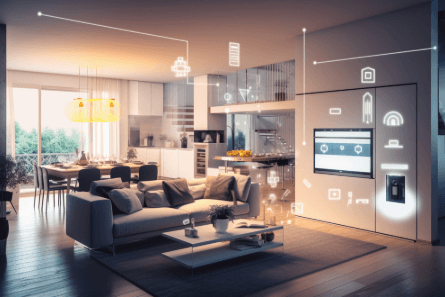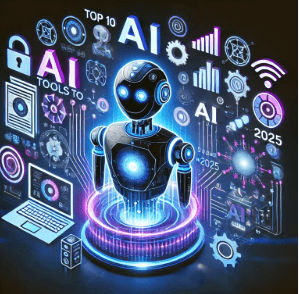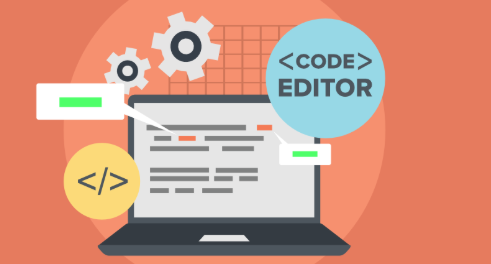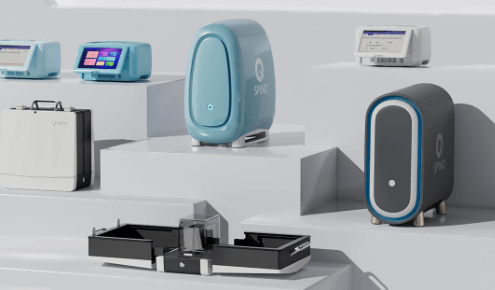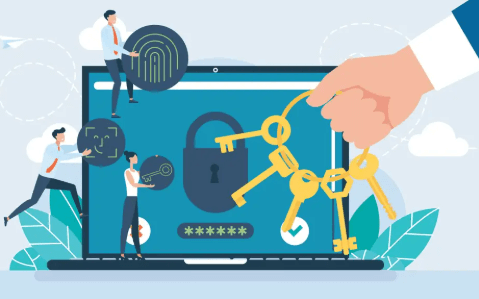Top Smart Home Devices of 2025: Trends, AI, Compatibility & Security
Introduction
Step into 2025, and the world of smart home technology is more seamless, intelligent, and personalized than ever. This year, smart home devices are not just about remote control—they anticipate your needs, ensure interoperability, and offer enhanced privacy and wellness. From AI-powered assistants and ambient intelligence to standards like Matter that bring true plug-and-play simplicity, the advances are shaping daily life in remarkable ways. In this article, we’ll explore the key device categories—from smart locks and cameras to kitchen appliances and wellness gadgets. Grounded in expert insights and market data, our overview is designed with everyday users in mind: easy to understand, practical, and reliability-focused. Whether you’re optimizing energy use, boosting security, or enhancing lifestyle, discover which smart home innovations stand out this year—and why they matter for your home.
1. The Smart Home Market in 2025: Scale & Trends
The global smart home market has surged—estimated at US$162 billion in 2025, with a projected compound annual growth rate (CAGR) of about 27 percent through 2034. North America dominates currently, while the Asia-Pacific region is rapidly catching up.
In terms of consumer behavior, ownership patterns have shifted. While internet-connected households averaged 8 devices during the pandemic, that number has now declined to about 6.2 as the tech-enthusiast early adopters have given way to mainstream users. Moreover, nearly 45 percent of U.S. households now own at least one smart home product.
LSI keywords: smart home market growth, CAGR, adoption patterns, mainstream users, market expansion
2. Interoperability & Standards: The Matter Breakthrough
A major obstacle in smart home evolution has been device compatibility—different brands, ecosystems, and bespoke apps. That’s changing with Matter, the industry-wide interoperability standard championed by Apple, Google, Amazon, Samsung, IKEA, and others.
Recent updates:
- Matter 1.4 (Nov 2024) added support for electricity management, solar systems, routers, water heaters, EV chargers, and improved Thread protocols.
- Matter 1.4.1 (May 2025) introduced NFC onboarding and multi-device setup—making installation friendlier.
- Matter 1.4.2 (Aug 2025) improved security and performance standards for network infrastructure, requiring Thread 1.4 certification and support for up to 150 devices.
These advances ease setup, improve cross-brand compatibility, and enhance security—offering homeowners simplicity and reliability.
LSI keywords: Matter standards, device compatibility, Thread protocol, smart home setup, interoperability
3. AI & Ambient Intelligence: Devices That Anticipate Your Needs
2025 is defined by AI that doesn’t just respond—it predicts. Home systems now adjust lighting, air quality, sound, and ambiance based on user behavior and biometric signals (gestures, voice, presence).
Specific innovations:
- Ambiance: Smart lighting and speakers (Lepro smart lights, Ballie robot, Amazon Echo Show 5) adapt mood and environment automatically.
- Cleaning: Robot vacuums and air purifiers (e.g., iRobot Roomba Combo j9+, Molekule Air Mini+) use sensors and object recognition for efficient, hands-free maintenance.
- Energy Efficiency: AI-enabled thermostats like Ecobee learn occupancy patterns and local weather to optimize heating and cooling for savings.
- Security: AI cameras from Ring and Eufy discern between people, pets, objects—reducing false alarms and enabling proximity-based unlocking.
Additionally, Samsung’s 2025 Bespoke AI appliance line—refrigerators, ovens, vacuums—integration with SmartThings and advanced personalization is transforming kitchen and home routines, all secured by Knox system and blockchain trust chains. And at CES 2025, Samsung showcased AI-driven “Home AI” roadmap, including Ballie and other ambient robotic assistants.
LSI keywords: AI-powered smart appliances, ambient intelligence, predictive devices, automation, Samsung SmartThings, Ecobee AI.
4. Smart Locks, Cameras & Home Security
Security remains a cornerstone of smart home decisions.
- Locks: Kwikset’s upcoming Halo Select Plus offers NFC unlocking (compatible with Apple Home Key) and Matter-over-Thread support; similarly, Schlage’s Sense Pro lock now supports Matter, Aliro UWB digital keys and is key-free—showcasing future-proofed design.
- Cameras & Doorbells: Google’s leaked Nest lineup includes a 360° speaker, Nest Video Doorbell, and indoor/outdoor cameras with 2K HDR and AI-powered features like “Zoom and Crop,” familiar face alerts, and daily AI summaries. Some design choices (lack of privacy shutters) raise concerns, but the AI enhancements and local storage options mark clear progress.
- Privacy & Wellness: Smart tech in 2025 is prioritizing privacy-first designs (physical camera shutters, audio/visual indicators) and wellness features like circadian lighting, air filtration, seamless integration into decor, and tools for aging in place (telehealth, remote monitoring).
LSI keywords: smart locks Matter, NFC unlocking, smart cameras 2K HDR, AI security, privacy smart devices, telehealth smart home
5. Energy Efficiency, Wellness & Aging in Place
The smart home is embracing health and well-being.
- Wellness: Tech like circadian lighting, advanced air filtration systems create healthier, more restful environments.
- Invisible Tech: Motorized drapes, TVs that double as artwork create smart functionality without compromising aesthetics.
- Aging in Place: Remote monitoring, telehealth integration, and smart security make independent senior living safer and more feasible.
- Efficiency & Appliance Automation: Samsung’s AI appliances offer sustainable routines; smart plugs still help manage energy by turning off devices remotely—and monitoring usage.
LSI keywords: circadian lighting, telehealth integration, energy-saving routines, silent smart tech, invisible devices
6. Planning, Privacy & Security Best Practices
Even as functionality soars, planning is vital:
- Begin with clear goals (security, energy saving, comfort), assess your Wi-Fi and electrical setup, choose your ecosystem (HomeKit, Google, Alexa).
- Ensure compatibility—Matter greatly simplifies this—and consider professional help for complex installations.
- Prioritize security: change default passwords, use WPA3 Wi-Fi, enable MFA, disable unused features, avoid public-Wi-Fi control.
- Smart plugs remain among the easiest and most cost-effective ways to upgrade existing devices while gaining control and safety.
LSI keywords: smart home planning, ecosystem selection, smart home cybersecurity, Matter compatibility, smart plug benefits
Conclusion
In 2025, smart home devices have evolved into intuitive, interoperable, and secure partners for modern living. Thanks to leaps in AI, platforms like Matter, and thoughtful design, homes now respond, anticipate, and adapt—while keeping privacy, health, and accessibility front and center. Whether it’s door locks that recognize your phone, lights that align with your mood and circadian rhythm, or appliances that automate cooking and energy savings, innovation has become deeply human-centered. And with market growth accelerating, these technologies are more accessible than ever. As you build or upgrade your smart home, focus on compatibility, usability, and security. Start with core devices, choose trusted ecosystems, and let this connected evolution enhance your day-to-day—effortlessly and intelligently.
5 FAQs (People Also Ask – with “smart home devices 2025”)
- What are the top smart home devices of 2025?
Highlighted devices include Matter-enabled smart locks (NFC, UWB), AI security cameras with 2K HDR (e.g., Nest), smart speakers governed by Gemini AI, AI-powered appliances, robot vacuums with advanced sensors, and smart wellness products like circadian lighting and air purifiers. - How does Matter improve smart home compatibility in 2025?
Matter 1.4+ introduces support for major device categories—from solar systems to ovens—and streamlines onboarding via NFC and multi-device setup. Improved security and Thread network performance further simplify integration and reliability. - Which smart home features help reduce energy use?
AI thermostats adapt heating/cooling based on occupancy and weather, smart plugs manage device schedules, and energy-smart appliances (refrigerators, ovens) optimize usage—collectively cutting costs while maintaining convenience. - Are smart home devices in 2025 privacy-friendly?
Yes—many offer physical camera shutters, privacy indicators, local storage options, and focus on data security (e.g., Samsung Knox, Matter encryption) to ensure user confidence. - Can smart homes support aging in place in 2025?
Absolutely. Today’s tech includes telehealth integration, remote monitoring, wellness environments, and emergency alerts—designed to help seniors live safely and independently.

